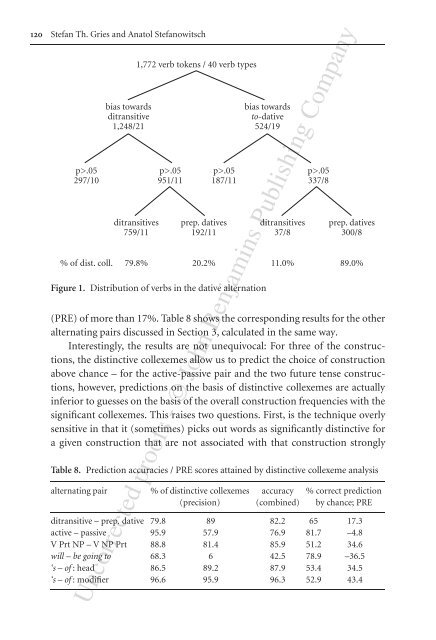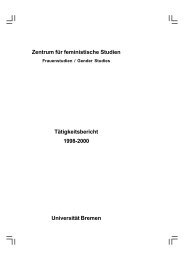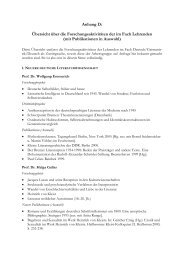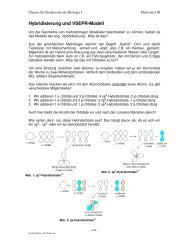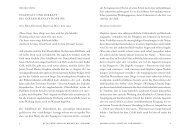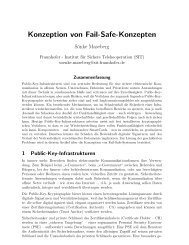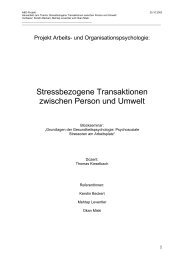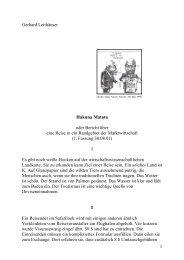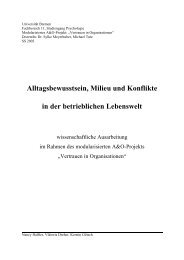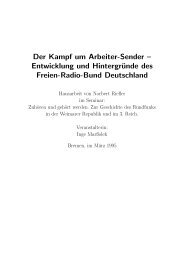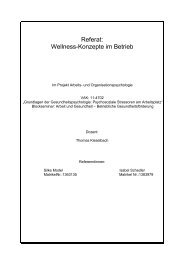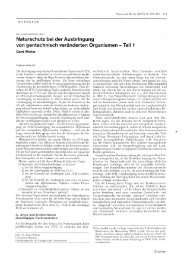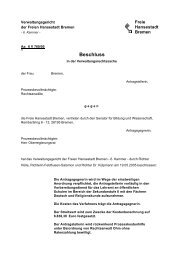Extending collostructional analysis - www-user
Extending collostructional analysis - www-user
Extending collostructional analysis - www-user
You also want an ePaper? Increase the reach of your titles
YUMPU automatically turns print PDFs into web optimized ePapers that Google loves.
120 Stefan Th. Gries and Anatol Stefanowitsch<br />
p>.05<br />
297/10<br />
bias towards<br />
ditransitive<br />
1,248/21<br />
1,772 verb tokens / 40 verb types<br />
ditransitives<br />
759/11<br />
p>.05<br />
951/11<br />
p>.05<br />
187/11<br />
prep. datives<br />
192/11<br />
bias towards<br />
to-dative<br />
524/19<br />
ditransitives<br />
37/8<br />
p>.05<br />
337/8<br />
prep. datives<br />
300/8<br />
% of dist. coll. 79.8% 20.2% 11.0% 89.0%<br />
Figure 1. Distribution of verbs in the dative alternation<br />
(PRE) of more than 17%. Table 8 shows the corresponding results for the other<br />
alternating pairs discussed in Section 3, calculated in the same way.<br />
Interestingly, the results are not unequivocal: For three of the constructions,<br />
the distinctive collexemes allow us to predict the choice of construction<br />
above chance – for the active-passive pair and the two future tense constructions,<br />
however, predictions on the basis of distinctive collexemes are actually<br />
inferior to guesses on the basis of the overall construction frequencies with the<br />
significant collexemes. This raises two questions. First, is the technique overly<br />
sensitive in that it (sometimes) picks out words as significantly distinctive for<br />
a given construction that are not associated with that construction strongly<br />
Table 8. Prediction accuracies / PRE scores attained by distinctive collexeme <strong>analysis</strong><br />
alternating pair % of distinctive collexemes accuracy % correct prediction<br />
(precision) (combined) by chance; PRE<br />
ditransitive – prep. dative 79.8 89 82.2 65 17.3<br />
active – passive 95.9 57.9 76.9 81.7 –4.8<br />
V Prt NP – V NP Prt 88.8 81.4 85.9 51.2 34.6<br />
will – be going to 68.3 6 42.5 78.9 –36.5<br />
‘s – of : head 86.5 89.2 87.9 53.4 34.5<br />
‘s – of : modifier 96.6 95.9 96.3 52.9 43.4<br />
Uncorrected proofs - © John Benjamins Publishing Company


